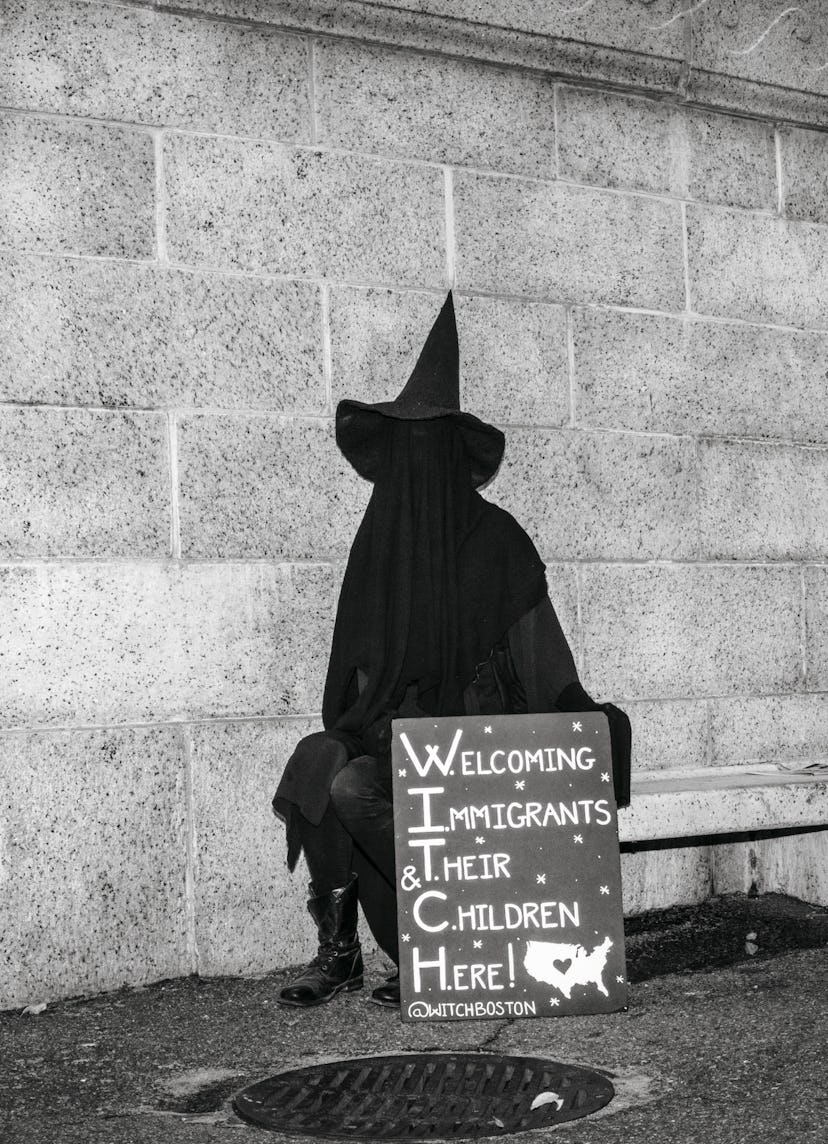The power of a witch derives as much from her deviance as it does from her alchemy. From Ovid’s Medea to Yoko Ono and Hermione Granger, self-professed witches throughout literature and history have lived at the margins of their societies while refusing to consent to their own marginalization.
Witches—typically peasant women with no political power—were hunted and burned at the stake for centuries. Scapegoats for everything from shipwrecks to famine, powerful men rounded up witches to distract from their own failures. Christian monotheists demonized them for claiming powers on par with gods, and indeed possibly for their very similarity to Jesus, who also healed the sick, cast spells, and placed hexes. The line between a witch and a prophet, perhaps, has always been gender.
Only in the 19th century did witch become a term of empowerment. The Romantics heralded witchcraft as a vestige of ancient pagan rites devoted to fertility and nature. And as female artists and intellectuals entered the public arena, their gaze fell upon the witch more empathetically than their male predecessors. Virginia Woolf, Anaïs Nin, Sylvia Plath, and Audre Lorde all wrote on witches as female iconoclasts and visionaries: in other words, as artists and razor-sharp minds. Centuries of misogyny have yoked the word witch to what women in particular have been taught to fear: becoming an outcast, an old maid, or “crazy.” But witch today carries the charge of a compliment more than slander. Witches have long seen the toxicity of patriarchal late capitalism and long since hit the unsubscribe button. Is it possible to envy anyone more?
Images from Witchcraft The Library of Esoterica.
Taschen’s latest book on the topic, Witchcraft, takes this fraught history and imbues it with a magic befitting its subject. Hundreds of evocative photos, sketches, paintings, and assorted ephemera fill the book’s five hundred pages, enlivening essays on the history and meaning of witches and witchcraft. Photographs of the W.I.T.C.H. (Women’s International Terrorist Conspiracy from Hell) share page space with Albrecht Dürer engravings of witches in the nude. Contemporary painter Anthony “Bones” Johnson’s Lilith levitates above a crowd, while 17th-century Flemish witches huddle around a cauldron. Primers on witchcraft rituals and symbols round out the collection, including the Wicca circle, the Yule log, and the hexagram, vividly depicted sliced into the abdomen of Marina Abramovic for her performance exploring psychic energy. And spells offer the witch-curious a chance to try out some magic for themselves.
At a time when religion is in decline, witchcraft bears many of its marks: namely, a devotion to ritual and the divine, particularly in oneself. But witchcraft is a religion without hierarchy, devoted to environmentalism, feminism, and equality. If Ray Bradbury’s axiom that “a witch is born out of the true hungers of her time” holds true today, it is perhaps for this very reason. Witchcraft is a celebration of true, even threatening power—by those who possess it least, and deserve it most.
